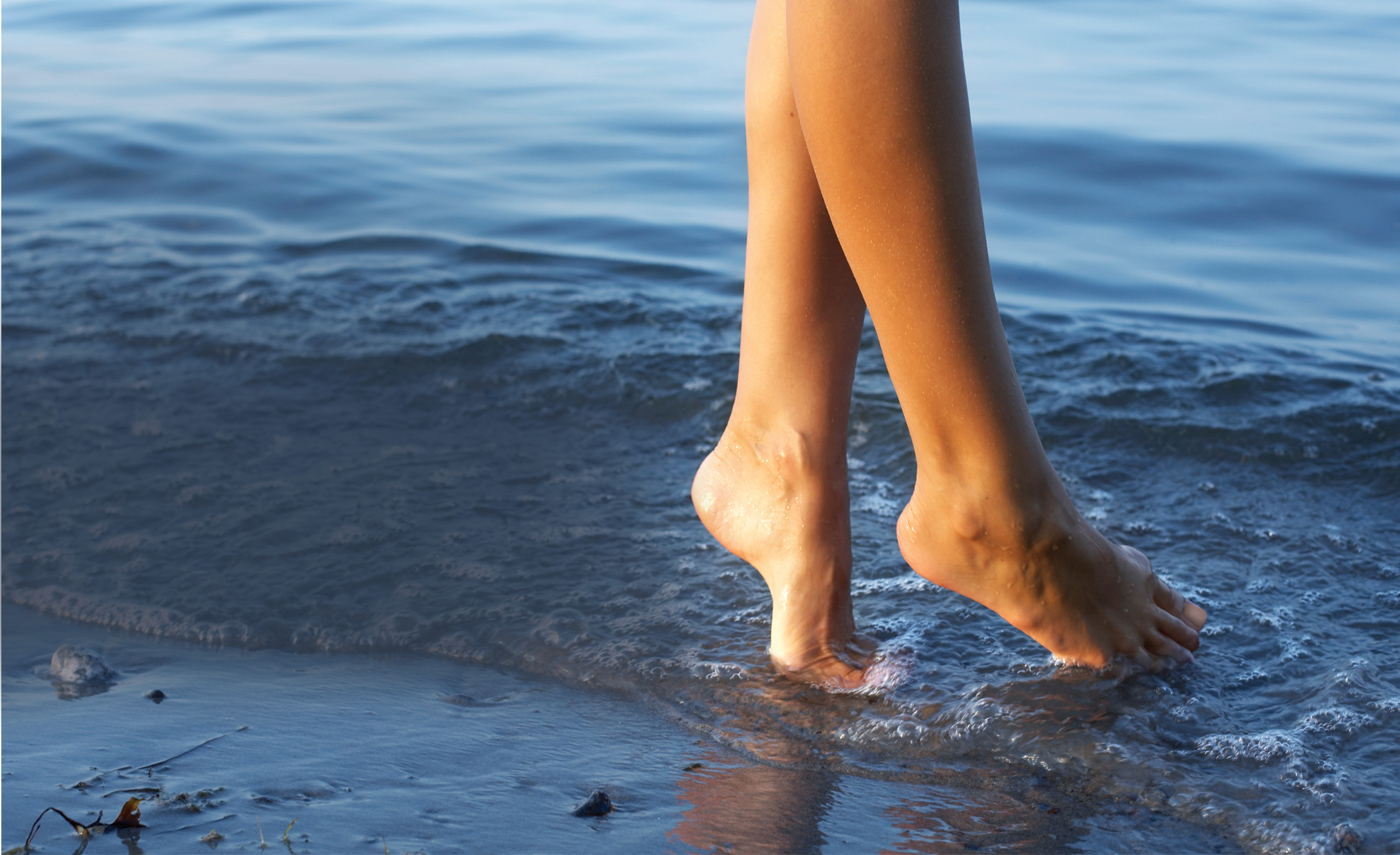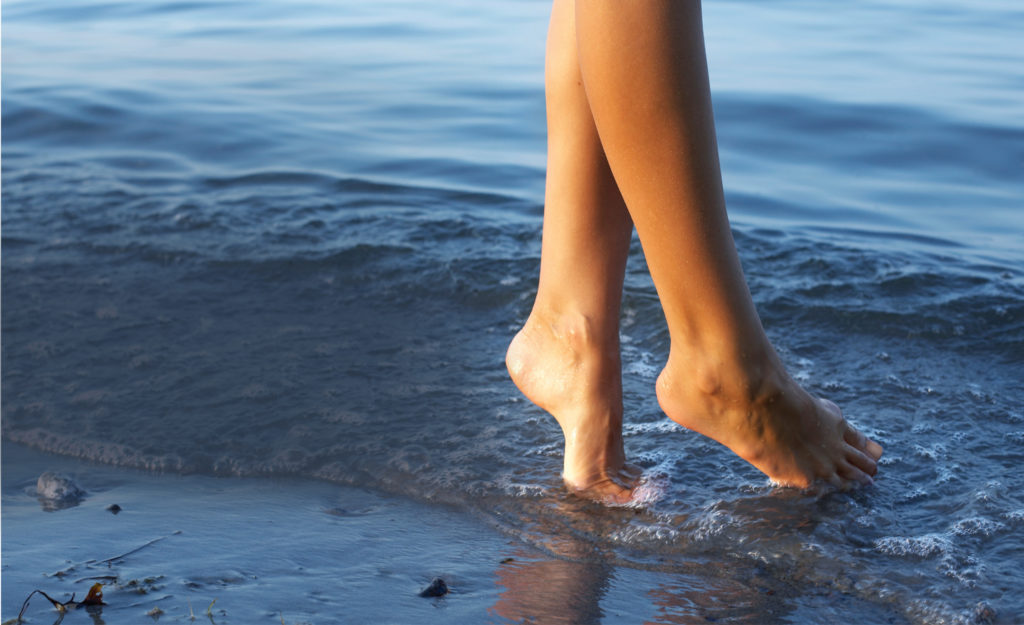

With parts of our country moving in and out of lockdown and us spending more time at home, our feet can quickly become the last thing on our minds. With them still working hard for us with every step we take, your podiatry team here at My FootDr have shared a six-step routine to easily treat your feet at home.
1. Start by putting your feet up
There’s a good reason that putting your feet up at the end of a long day feels so good. In this case, you’ll want to lay down and put your feet up above the level of your heart. For example, laying in bed and propping your feet up on the wall, or laying on the couch and resting your feet up and the armrest. This position works with gravity to bring excess fluids down and out of the tissues of your feet and legs, helping reduce swelling, relaxing tired muscles, and leaving your feet feeling relieved.
2. Soak your feet
Soaking your feet in warm water for 15-20 minutes promotes blood flow and circulation to the area, helping reduce foot fatigue, soothe tired muscles and soften the skin. If you have any around, add some Epsom salts to your foot bath as they are thought to enhance skin softening and exfoliation, relieve muscle tension and to promote relaxation.
Note: If you have diabetes, you’ll want to be extra careful with the temperature of your water as you may not be able to feel if it is too hot and damaging your skin. Learn more about how diabetes affects your ability to feel in this way here.
3. Moisturise & massage
After soaking, ensure you dry your feet well, then it’s time to get the moisturiser out to help keep the skin on your feet soft and give you maximum sensation. You can massage the cream into your feet, promoting circulation and working to help release muscles that may be stiff, tight or tired.
If you have thick, hard and dry skin on your heels, or have cracked heels, using a cream that contains urea like this one will help your feet get the best results at home.
4. Trim & file your toenails
Next, it’s time to trim and file your toenails. You want to trim your nails straight across the nail and not cut down the sides to reduce your risk of developing a painful ingrown toenail. Use proper nail clippers and a diamond nail file.
5. Paint your toenails – or let them breathe
Now you have a choice – you can paint your toenails, or remove any polish and let them breathe and recover. If you’re regularly painting your nails, we recommend having a break of one week between applying the polish. If you are choosing to paint your nails, choose a polish containing organic ingredients and anti-fungal properties like these.
6. Keep your feet supported at home
When we’re not wearing our good outdoor shoes, our feet and arches can quickly tire from walking around our house all day. After your nails are painted and dry – or your polish is removed – put on some orthotic slippers like these for women or these for men to keep your feet and arches happy around the home.
Don’t forget to leave your shoes out in the sun
If the sun is shining, the last favour you can do for your feet is to remove the liners from your shoes, whether you wear orthotics or not, and leave them outside in the sunshine. UV light from the sun is incredibly effective in killing pathogens like bacteria, hence why artificial UV is used in many sanitisation practices worldwide. We recommend you don’t leave your orthotics in direct sunlight for more than ten minutes as the UV light may damage the plastics in them, instead let these air in the shade.
We’re here to help
If you noticed any foot pains or problems as you’ve been following this routine, our experienced team of podiatrists are here to help. With clinics located Australia-wide, we’re your trusted local team. You can book your appointment online here or call us on 1800 FOOTDR


